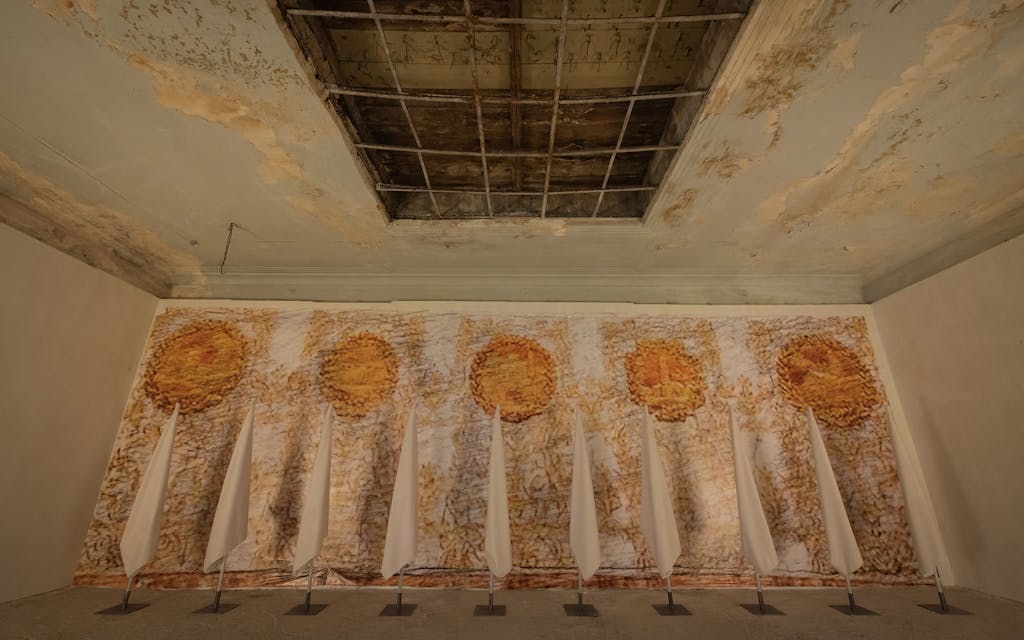IVAN BAZAK AT KYIV BIENNIAL 2023, UKRAINE
On the Periphery of War, 7 – 30 OCT 2023

The fifth edition of the Kyiv Biennial opened a series of exhibitions and events across Europe at different venues in Kyiv, Ivano-Frankivsk, Uzhhorod, Berlin, Warsaw, Lublin, Antwerp, and Vienna as the main location, starting in Kyiv in October and finishing in Berlin in 2024.
Located in Ivano-Frankivsk, 451 kilometers from the Ukrainian capital, the exhibition On the Periphery of War is held at Asortymentna Kimnata, a project space that serves as a crucial wartime hub featuring an artists’ residence, a library, and an archive. Curated by Alona Karavai, Roman Khimei, Yarema Malashchuk, and Anton Usanov, the exhibition displays artworks on the main floor and in the rundown basement (which also functions as a bomb shelter). These works address the ethical dilemma highlighted by the curatorial statement: "On the periphery of war, we either strive for a zero point at the frontline through volunteering, self-restraint, and the search for an internal enemy, or we retreat from the existential experience through pleasure and sarcasm."
Ivan Bazak, 'Backstage of Historical Events', 2023, Ivano-Frankivsk. Photograph by Oleksandr Kovalenko. Courtesy of the VCRC
For this exhibition, Bazak has recreated the hall of the Palace of Independence in Belarus, where the Minsk agreements—drafted in 2014 to end the war in Donbas—were negotiated. This is presented through his installation Backstage of Historical Events.
"I found interest in the visual history around the Minsk agreements. After all, decision-making places are not only about decisions but also about circumstances, small actions, and scenography. The Palace of Independence in Belarus was built in 2013. There is a hall where press conferences on the Minsk agreements took place. In all the photos and videos, only one wall is visible. This wall with gilded “signs” refers to pagan runes, rituals, and symbols. Similarly, in the Soviet Union, there was a return to the pagan form of ritual at the level of party aesthetics. The entire scenography around the Minsk agreements and events is thoroughly documented in the protocols. It is a theater in which everyone’s participation is described in detail. In my work, I focus not so much on agreements but on the importance of the backstage for history. Entering the room and standing in front of the wall with flags, the viewer ends up on the “stage” where the play Minsk Agreements was performed. Each viewer is invited to feel like an actor in this play." – Ivan Bazak
VISIT WEBSITE
ART BASEL STORIES – IMAGINING UTOPIAS AT THE KYIV BIENNIAL